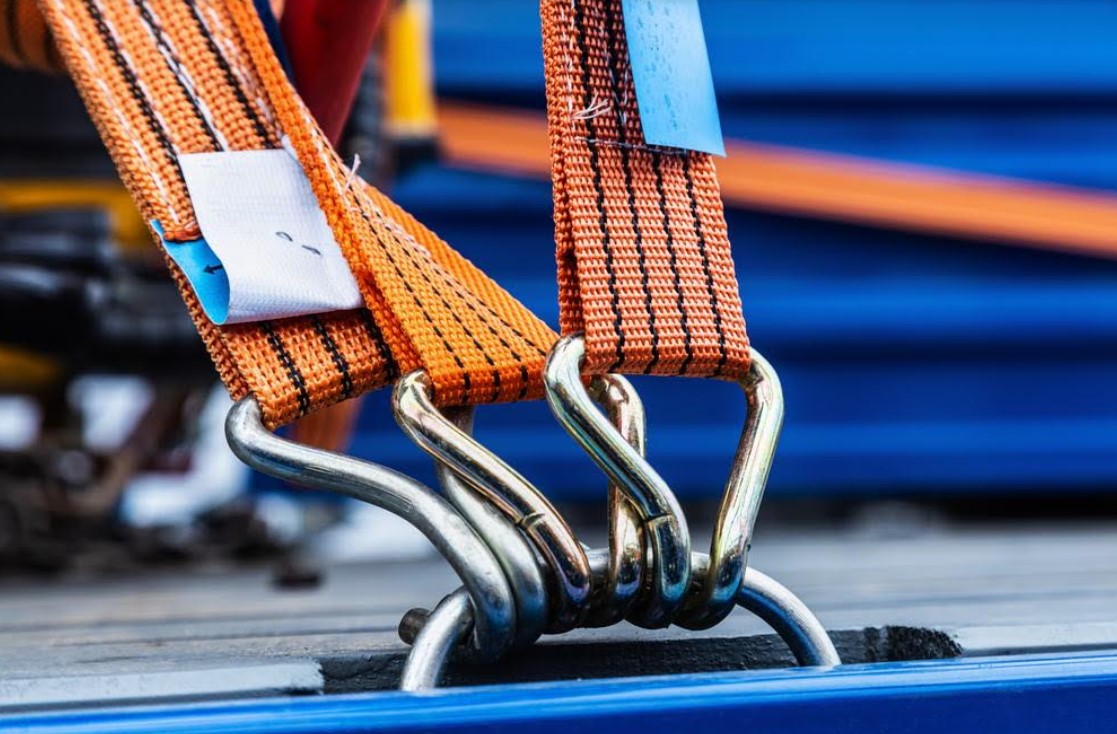
One of the main advantages cam straps have over both ratchet straps and ropes is ease-of-use. Deploying a cam strap requires almost no effort beyond placing the strap over the load. It really is simple. Anyone should be able to use cam straps without breaking a sweat.
If you are not familiar with these handy little devices, you’re in luck. This post will lay everything out for you in simple terms. Let’s start with a description of the cam strap itself.
A Strap and Buckle
A cam strap is a strap made of webbing material with a cam buckle attached at one end. Think of the cam buckle as similar to a belt buckle. You thread the strap through the buckle, were it remains secure until you release it.
Some cam buckle straps, like those manufactured under the Rollercam brand, can also have hooks attached to one end. Hooks allow you to attach the straps to the sides of a trailer or pickup bed so that you don’t have to wrap the strap completely around the load.
Properly Arrange the Load
Moving on to the process of deploying a cam strap without breaking a sweat, you start by arranging your load. Whatever it is you are carrying should be positioned in whatever location makes transport the safest. Individual items should be packed closely together and heavier items should be on the bottom.
Check the Load Limits
You are ready to start deploying cam straps after your load is arranged. But first, check your load limits. All types of tie-down straps are rated in terms of the amount of load they can carry. You need to have straps rated high enough for the cargo you are carrying.
If you don’t know how to check load limits or how to determine whether your straps are adequate, take some time to do a little online research. You can find plenty of helpful guides that spell out everything you need to know about load limits and strap selection.
Place the Straps Over the Load
With your load arranged properly and load limits checked, it is time to start tying everything down. Place your straps over the load in strategic locations. If you are not using hooks or eyelets on one end, you will probably have to wrap the straps around the load entirely. Otherwise, you can just go over the top.
Just be sure to not tighten anything down until all your straps are in place. You want to gradually tighten each strap in succession in order to evenly apply force, the same way you gradually tighten lug nuts on a wheel.
Buckle Up and Titan
The final step is to thread each strap through its associated cam buckle. The instructions that came with your cam straps should clearly show how to do this. Once the strap is threaded, a gentle pull will tighten it down nicely.
The beauty of the cam strap is that it doesn’t require a ton of force to tighten. The built-in cam reduces friction so that you can gently pull without having to engage in a tug-of-war with your load. The only downside here is that you could over-tighten if you pull too hard. Just be careful of that.
That’s really about all there is to it. Cam straps are pretty basic technology that anyone can master. You can deploy cam straps quickly, easily, and without much effort. You will not even break a sweat on most days. You cannot say the same thing for ropes and chains, can you? Cam straps are the better choice.
